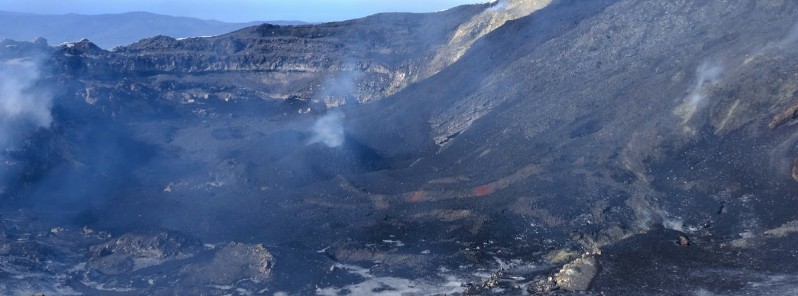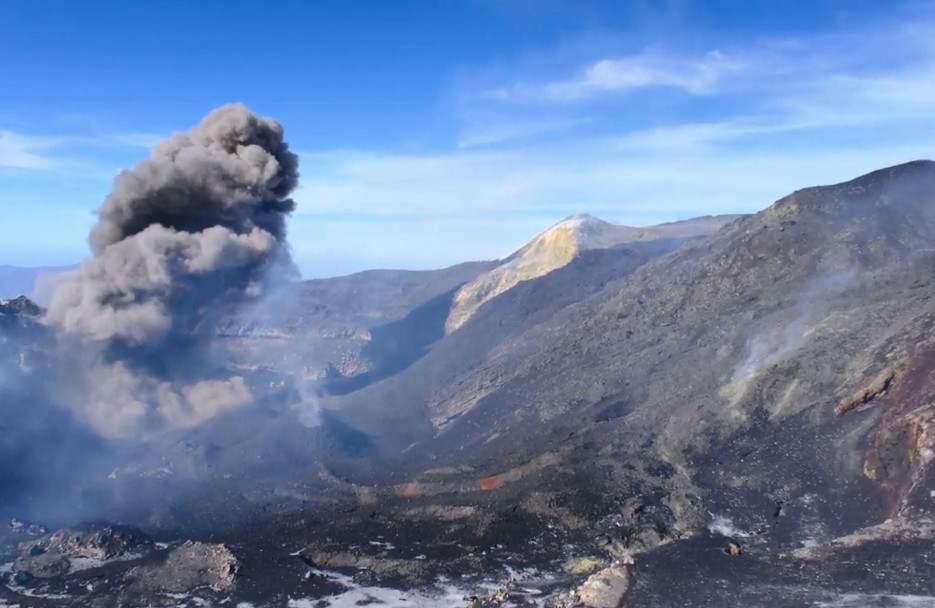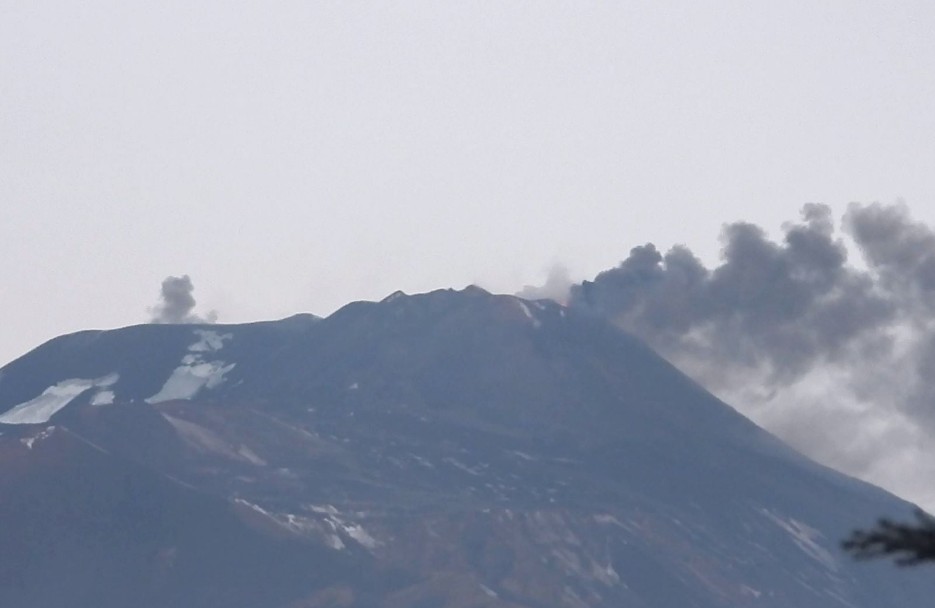Strombolian activity at Etna volcano, Italy

Analysis of the images of the INGV-OE surveillance cameras and the observations made by INGV staff during a survey carried out at Etna's summit area on February 5, shows that Strombolian activity continues in the Southeast Crater with varying frequency and intensity over time.
Intensification of Strombolian activity at the mouths in the eastern summit of the cone started at around 04:30 UTC today, producing a diluted ash cloud for about 1 hour that dispersed eastward.
Intense Strombolian activity continued from several mouths at the bottom of the Bocca Nuova crater, with volcanic material launched above the crater rim.

Strombolian and effusive activity at Voragine crater feeds a small intra-crater lava flow directed towards Bocca Nuova.
Explosive activity was also registered at the Northeast Crater.
The volcanic tremor amplitude, while maintaining high values, shows no significant changes. The location of the tremor source and infrasonic activity are also stationary.
Signs from soil deformation monitoring stations showed no significant changes.


Image credit: Francesco Ciancitto, February 5, 2021


Image credit: Francesco Ciancitto, February 5, 2021


Image credit: Francesco Ciancitto, February 5, 2021


Image credit: Boris Behncke, February 6, 2021
Geological summary
Mount Etna, towering above Catania, Sicily's second-largest city, has one of the world's longest documented records of historical volcanism, dating back to 1500 BCE. Historical lava flows of basaltic composition cover much of the surface of this massive volcano, whose edifice is the highest and most voluminous in Italy.
The Mongibello stratovolcano, truncated by several small calderas, was constructed during the late Pleistocene and Holocene over an older shield volcano. The most prominent morphological feature of Etna is the Valle del Bove, a 5 x 10 km (5.1 x 6.2 miles) horseshoe-shaped caldera open to the east.
Two styles of eruptive activity typically occur at Etna. Persistent explosive eruptions, sometimes with minor lava emissions, take place from one or more of the three prominent summit craters, the Central Crater, NE Crater, and SE Crater (the latter formed in 1978).
Flank vents, typically with higher effusion rates, are less frequently active and originate from fissures that open progressively downward from near the summit (usually accompanied by strombolian eruptions at the upper end).
Cinder cones are commonly constructed over the vents of lower-flank lava flows. Lava flows extend to the foot of the volcano on all sides and have reached the sea over a broad area on the SE flank. (GVP)
Featured image credit: Francesco Ciancitto, February 5, 2021

Commenting rules and guidelines
We value the thoughts and opinions of our readers and welcome healthy discussions on our website. In order to maintain a respectful and positive community, we ask that all commenters follow these rules:
We reserve the right to remove any comments that violate these rules. By commenting on our website, you agree to abide by these guidelines. Thank you for helping to create a positive and welcoming environment for all.